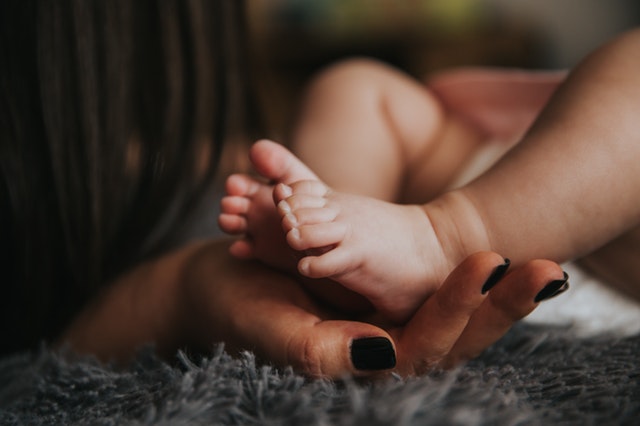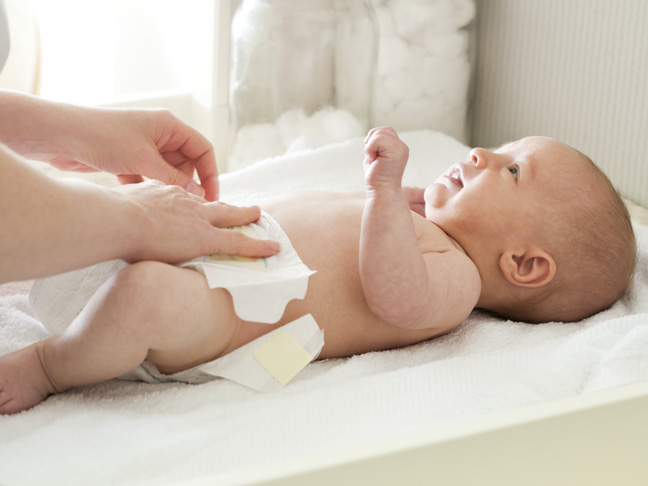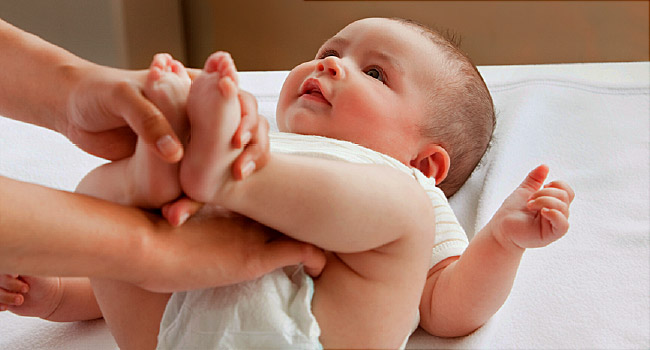Baby Care Essentials
Baby Massage

Body massage is given to baby for smoothening the skin, make the baby feel fresh, relaxed and to improve the blood circulation.
You can do body massage after bath or before bath. As per mother permission you can use oil or baby body lotion
Items Required:
- Rubber or Plastic sheet
- Baby body lotion or Oil
- Wrapping cloth
Procedure:
- Wash your hands
- Collect the items required
- Please switch of the A/C or Fan.
- Spread the rubber sheet or plastic sheet over the bed or floor.
- Take the oil in bowl, warm the oil if required and check the warmth before applying on Baby
- Make the baby ready by removing the dress and napkins and place the baby on plastic sheet
Steps to follow:
- Legs,
- Calves,
- Thighs,
- Chest,
- Tummy,
- Both hands,
- Face,
- Back.
Leg: Take the oil or lotion apply over the base of the foot and massage with your thumb finger from the heel towards the toes for minimum 5 times, then spread the toes for 5 times.
Next, massage both the ankle joints in a rolling manner by using your thumb fingers for five times.
Calves: There are two types of calves’ massage.
- Swedish milking–
Swedish milking: First apply oil or lotion over the legs then start massage from ankle joint to knee joint for 5 times (both the side) Then from knee joint to groin area for 5 times (both the side).
- Indian milking– (Prefer to give type 1, If the mother ask for type 2 then u can also give type 2 massage.)
Indian milking: Massage starts from groin area towards foot. (This is optional only if mother ask)
Chest:Take the oil or lotion, apply over the chest to shoulder and massage from down to up and inner to outer side 5 times (like broadening the chest)
Next move your hands in a cross manner from left to right and right to left.
Abdomen: Apply oil or lotion over the abdomen and massage 5times from up to down then circular motion. (Always abdominal massage should do in the clockwise manner without touching umbilical cord).
Hands: Swedish milking is better for both the hands and legs than Indian milking. If you do Indian milking for the hands and legs, then end up with Swedish massage.
Face: Massage cheek gently with circular motion then forehead by using thumb. (Face massage is not compulsory)
Back: Apply oil and massage from up to down five times then massage from one side to another side for five times.
Buttocks: Massage the buttocks from down to up for 5times.
After completing the massage, Turn the baby slowly, place the baby on sheet, and wrap the baby in wrapping cloth.
Replace the articles in proper place.
Do’s:
- Always hands and legs massage should be done towards the heart.
- Always abdominal massage should be done only clockwise.
Don’ts:
- Do not turn babies below 3 months,
- Don’t do head massage,
- Do not apply oil over the head and face (except cheeks and forehead)
Baby Bath

There is no need to give a newborn bath every day. In fact, bathing the baby more than several times a week can dry out his or her skin.
It does not matter when you give a bath and make sure do not do soon after a feed.
Itmes Required:
- Bath tub
- Bowl with 2-cotton ball for cleaning eyes
- Body wash (Soap/ Shompoo)
- Large Towel
- Wrapping cloth
- Alcohol swab for cord care
- Baby dress, napkins or diaper
- Dust bin.
- Nail cutting scissor for nail cutting
Procedure:
- Wash your hands thoroughly .
- Collect the items required
- Add warm water and cold water in a tub up to 2-3 inches and check for the temperature of the water from the elbow.
- Remove the baby’s cloths and clean the diaper area top to bottom by using wet wipes. (Check if baby has passed urine or motion)
Steps to be followed:
- Clean the both eyes with cotton balls inner cantus to outer cantus with clean water.
- Next Clean the face with warm water. Remember, do not apply soap to the face and do not touch the eyes.
- Wet the hair with the water and apply shampoo, then gently clean the hair
- Pour fresh warm water over the head.
- Next, wet the front part of the body and apply shampoo then gently clean, attention needs to be given to the areas like under arm, neck, groin, middle of the fingers and folding parts. (Remember Do not touch the umbilical cord).
- Then turn the Baby slowly and give bath on the back for the baby.
- Pour fresh warm water all over the body and place the baby in towel.
- Dry the baby face first, then head and finally the body.
More attention should be given while drying the areas like under arm, back of the ear, neck, groin, middle of the fingers, diaper area, folding parts and in between the toes.
- Clean the umbilical cord from alcohol swab.
- Put the baby dress and napkin or diaper and wrap the baby using wrapping cloth.
- Wash your hands.
- Finally can give the feed.
How to fix a diaper

A diaper or a nappy is a type of underwear that allows the wearer to defecate or urinate without the use of a toilet, by absorbing or containing waste products to prevent soiling of outer clothing or the external environment. When diapers become soiled, they require changing, generally by a second person such as a parent or caregiver. Failure to change a diaper on a sufficiently regular basis can result in skin problems around the area covered by the diaper.
Steps to follow for fixing diaper:
- Lay your baby on his back. Remove any clothing that inhibits access to the diaper. At this age, rompers are popular clothing items; they contain snaps for easy diaper access.
- Remove the soiled diaper. For disposable diapers, pull up the sticky tabs. For reusable cloth diapers, remove the diaper cover and snaps or Velcro from around your baby’s waist.
- Lift your baby up gently so you can scoot the diaper out from under his bottom.
- Use wipes to clean your baby’s diaper region. Always wipe from front to back to avoid infection, especially for girls.
- If the area is red or inflamed, soothe it with diaper ointment.
- Wait for your baby’s skin to dry before putting on a fresh diaper.
- Take a fresh diaper and place it under your baby. Bring the front part up on your baby’s stomach and fasten the tabs to secure the diaper on his waist.
- Replace any clothing over the new diaper.
How to Prevent Diaper Rash
Take these precautions to take to prevent diaper rash. If you suspect a diaper rash is becoming infected, always call the doctor.
- Check your infant’s diaper often (every two hours) and change it promptly.
- Clean your infant’s diaper region thoroughly during changes.
- Do not use scented wipes or soaps on your infant’s diaper region.
- Pat, do not scrub, a baby’s bottom when drying your infant after a bath.
- Avoid plastic pants and look out for skin marks, which indicate the diaper is too tight.
Dealing with nappy rashes

There may be red patches on the baby’s bottom, or the whole area may be red. The skin may look sore and feel hot to touch, and there may be spots, pimples or blisters.
Nappy rash can be caused by:
- Prolonged contact with urine or stools
- Sensitive skin
- Rubbing or chafing
- Soap, detergent or bubble bath
- Baby wipes
- Diarrhea or other illness
These simple steps will help:
- Change wet or soiled nappies as soon as possible. Young babies need changing as many as 10 or 12 times a day; older babies at least six to eight times.
- Always have a good supply of nappies.
- Watch for any allergies to the wet wipes or soap etc.
- If you find redness on the diaper area, avoid using diapers and keep the area dry always.
- Use diaper rash cream as per doctor’s advice.
To read more on Baby care, click on the link below,
Content Courtesy : Portea


